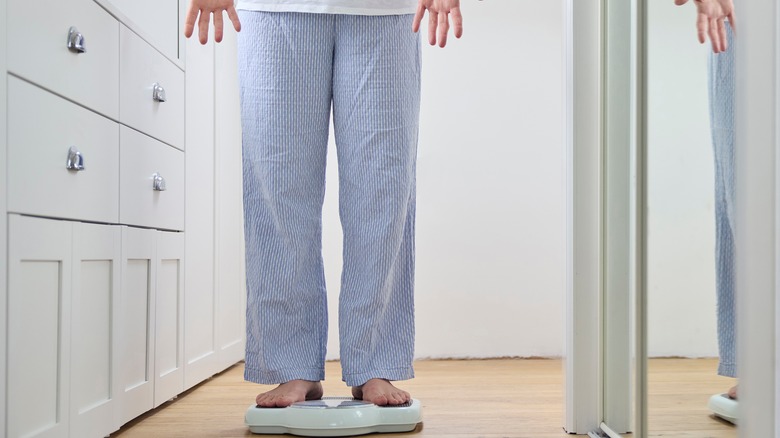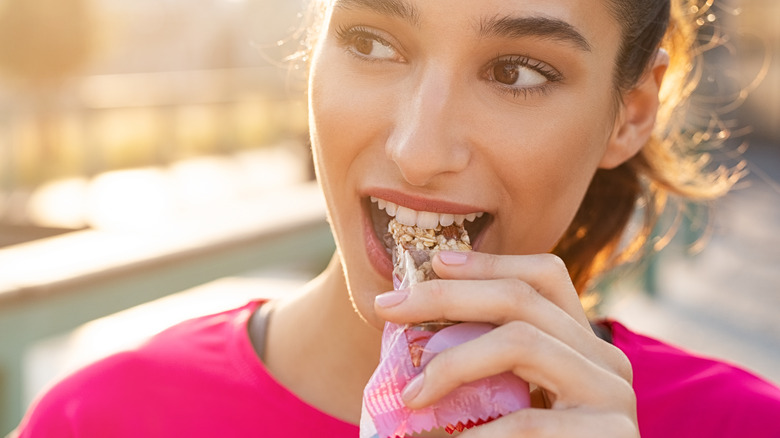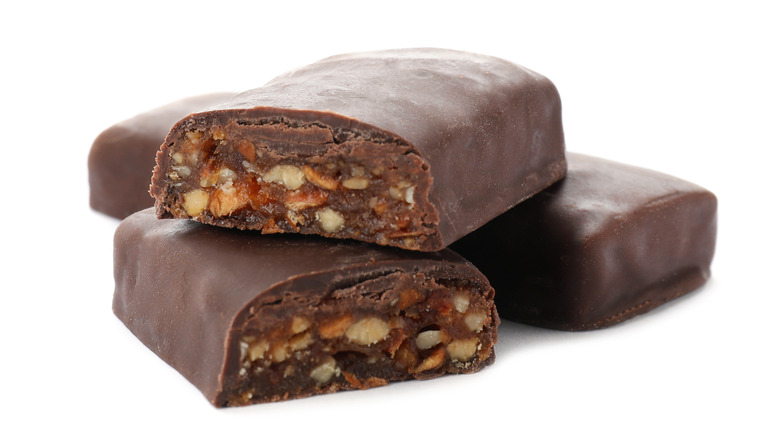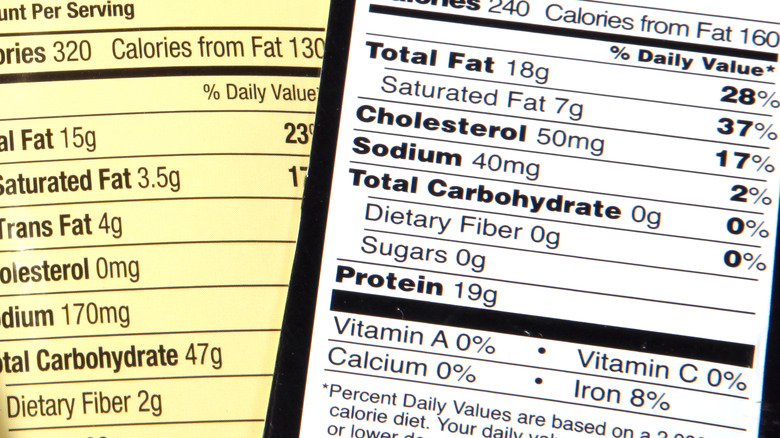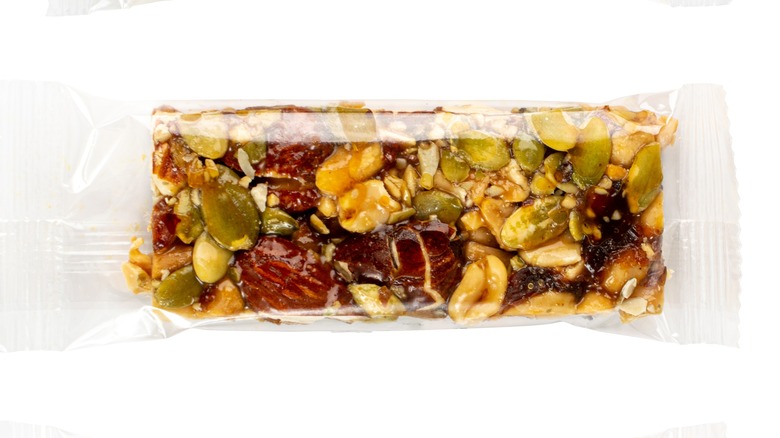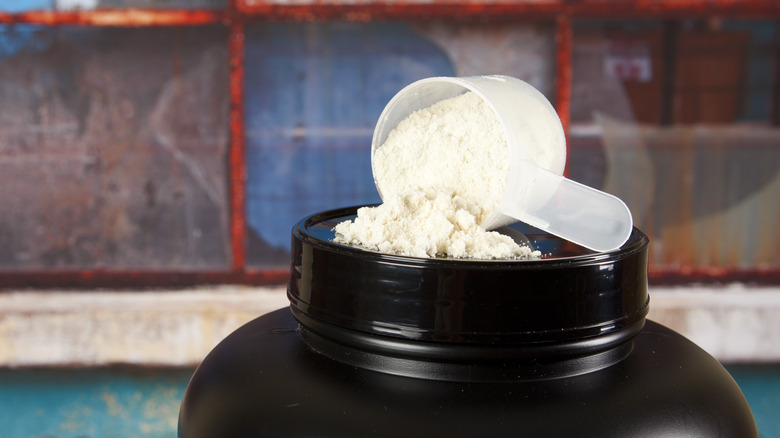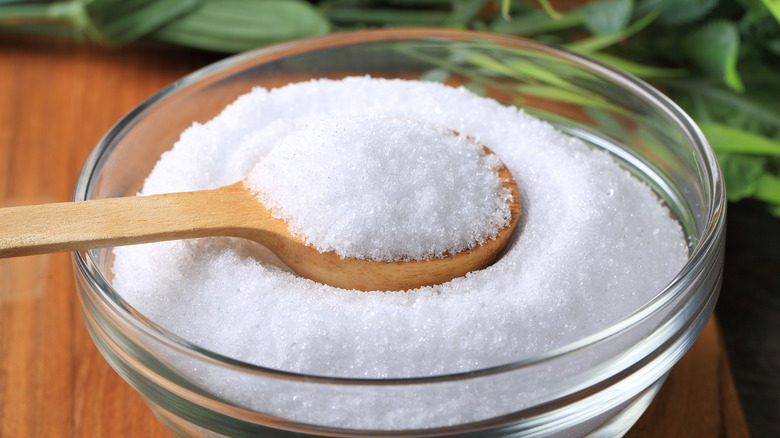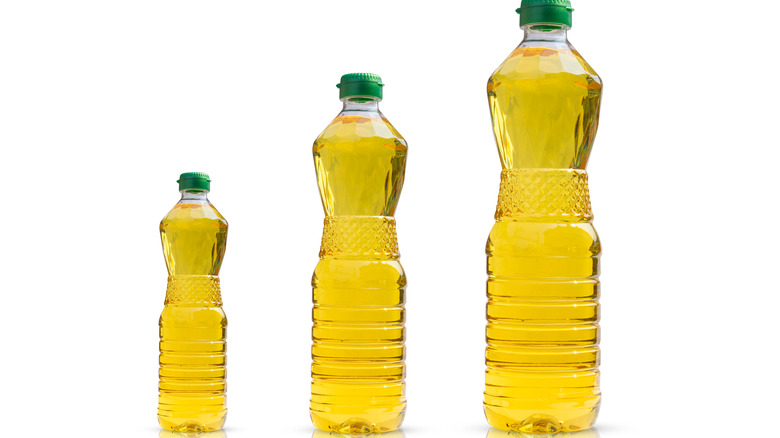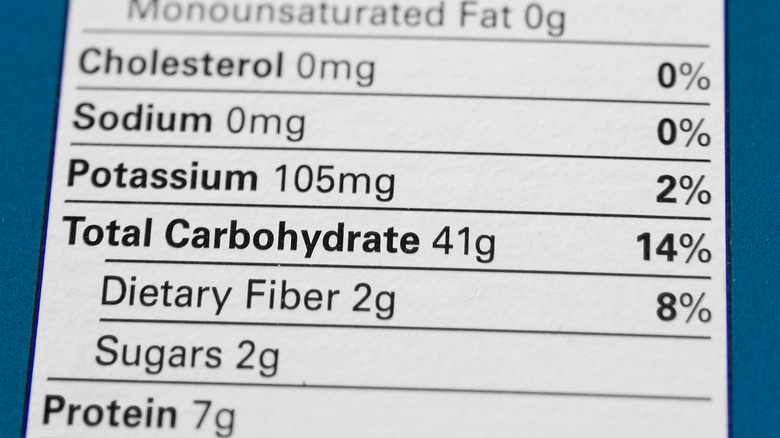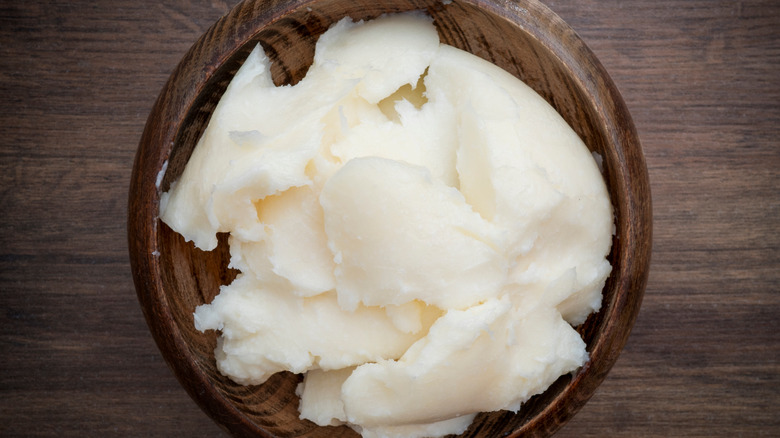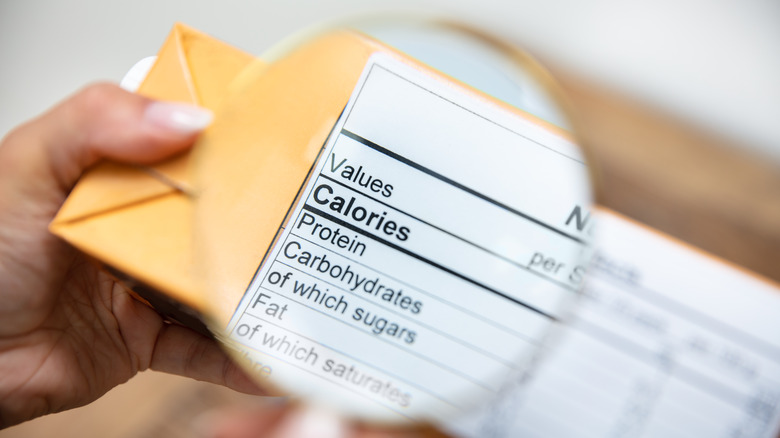Everything That's Not Healthy About Protein Bars
Protein bars can be an immediate source of nutrition, especially when you need a quick source of energy. Perhaps you've been hiking in the mountains, you've just completed a vigorous run, or you just finished a gym workout with little time before a set of back-to-back meetings. Or maybe you just wanted to grab a healthy gas station snack for your road trip. We get it; there are times when you just need something convenient and ready to eat. Whatever your reason, a protein bar may be included in a healthy diet — every once in a while.
But here's the thing: Although they can help you meet your protein and other macronutrient needs, many protein bars are high in refined sugars and overly processed ingredients. Additionally, nutrient composition can vary from bar to bar (and even within the same brand). So, it's important to read the labels, including the list and order of ingredients. Read on to discover everything that is not healthy about protein bars and learn what else to look for on the label.
They may add excess calories to your day
Eating protein bars to curb your appetite may not necessarily prevent overeating. In fact, it may have the opposite effect, according to a study in the Journal of Functional Foods. Non-athletes who consumed one protein bar daily retained their usual appetites and increased their fat mass by 3%. Even just an extra 170 calories per day can contribute to weight gain over time, researcher and registered dietitian Carol S. Johnston, PhD, RD, explained at an Obesity Week conference (via MedPage Today).
So, why might snacking on a protein bar contribute to excess calories at the end of the day? Not all protein bars are equal; some may not have nearly enough protein to be satisfying, as registered dietitian Brian St. Pierre told Women's Health. And if it has twice as many carbs as protein, it can still spike your blood sugar levels, which can increase your hunger and cravings.
But how much protein should your bar contain, exactly? Aim for one with at least 15 grams of protein, although 20 grams is ideal (via Women's Health). And do watch those carbs, especially since it is intended to be a snack, not a meal replacement. That means no more than 30 grams of carbs.
They are often highly processed
It's true that most protein bars are highly processed; all packaged foods are processed to some degree. Grinding, milling, and crushing, all of which make food grains easier to consume, are forms of processing. While that's not such a bad thing, the extent to which food is processed can make a difference.
Processed foods may incorporate sugar, salt, and fat, according to the Harvard T.H. Chan School of Public Health. These ingredients can help balance flavor, improve texture, and enhance shelf life. But when the formulation extends these three added ingredients to include artificial flavors and colors, emulsifiers and thickeners, artificial sweeteners, and preservatives, the product is considered a "highly processed" food.
The problem with processed foods is that they can increase a person's daily sugar, salt, and fat intake beyond the recommended levels (via NHS). What's more, sugar and fat can also drive up one's caloric load. Highly processed foods' artificial ingredients can also lead to weight gain. In fact, evidence suggests that artificial flavorings and preservatives may contribute to the early stages of obesity and type 2 diabetes, according to a 2022 article in the American Journal of Managed Care.
Protein bars may be candy bars in disguise
Conventional wisdom tells us not to judge a book by its cover. By the same token, you shouldn't judge a protein bar by its claim. Surely, a protein bar can provide benefits by virtue of its protein content. But when it contains as much sugar as protein (if not more), that's where you should draw the line. That's why it's important to read the labels. And don't just read the nutritional information; the order of ingredients is just as important, as the first listed ingredient is typically present in the largest quantity.
Some protein bars contain as much sugar as a KitKat (21 grams), registered dietitian Leah Woock told Health eNews. Moreover, 38% of protein bars contain chocolate as the main ingredient (via Safe Food). Chocolate might be easy to spot since it is likely a coating or in the form of chocolate chips. A small sprinkling of chocolate chips won't tip the scale, though there are some protein bars that contain much more. That said, added sugars may be less obvious. Some hidden sugars on the label include fruit nectars, juice concentrates, fructose, sucrose, maltose, dextrose, corn or rice syrup, agave, molasses, and honey.
They may have more sodium than you need (for a snack)
The American Heart Association recommends no more than 2,300 milligrams of sodium per day, or ideally, a daily limit of 1,500 milligrams of sodium. Because sodium can easily add up throughout the day, it's important to read the labels and go with options with less sodium when choosing packaged food items.
One protein bar won't take you over the daily limit, but it may have more sodium than you realize. Some protein bars have anywhere between 250 and 490 milligrams of sodium (that's 20% of your daily value!), making them a moderate- to high-sodium food. With that in mind, it's easy to see how one might exceed the sodium limit by the end of the day.
So, to stay on track, you might opt for a protein bar with 150 milligrams of sodium or less; that constitutes just 10% of the recommended daily value. Remember, a protein bar is meant to tide you over between meals, not to provide your nutritional needs for the day.
Protein bars may be lacking in fiber
You may be hard-pressed to find a protein bar that checks all the boxes (high in protein, low in sugar, high in fiber, etc.) — and even if you do, it may still contain additives, including sugar alcohols and oligosaccharides, that can cause gas and bloating.
Some options that are relatively low in sugar contain only 1 to 2 grams of fiber. Case in point: Orgain Organic Vegan Protein Bars Chocolate Chip Cookie Dough contains 10 grams of protein, 6 grams of added sugars, and a mere 1 gram of fiber. With only a moderate amount of protein and minimal fiber, it might not be as satiating as you think. Does this make it a poor diet choice for an otherwise healthy diet? Not necessarily. But fiber content in your meals and snacks is important because of its role in regularity and gut flora balance, in addition to a host of other benefits, according to Houston Methodist. Adults up to age 50 should consume between 25 and 38 grams of fiber per day (via Harvard Health Publishing).
You won't get a serving of veggies with protein bars
A protein bar will not contain a serving of veggies; from a flavor standpoint, you likely wouldn't want it to. With that said, vegetables comprise a food group that is lacking in the Standard American Diet (per NutriSense). And while protein bars may contain nuts and seeds, that's pretty much the extent you'll get from them in terms of solid plant foods. Furthermore, protein bars don't have the combination of amino acids to form a complete protein, which is why you should not rely on them as a meal replacement (via Henry Ford Health).
What you may be missing out on are plant-derived phytonutrients (aka phytochemicals) you can get from a wide variety of vegetable sources. These antioxidant nutrients include carotenoids and flavonoids present in foods like carrots, broccoli, bell peppers, soy beans, legumes, and kale. These nutrients are important for immunity and disease prevention, according to UCLA Health.
While you don't need to exclude protein bars from your diet entirely, it may be best not to replace meals or snacks with them on a regular basis. "It's a snack for when you're in a pinch," registered dietitian Stephanie Urrutia told the NY Times. "If you're going up the side of the mountain, if you can't grab a full meal."
Some of the proteins they contain might not be so optimal
Protein bar ingredients like soy lecithin or soy protein isolate may add to the protein count, but may not be so good for you. Registered dietitian Lauren Slayton even described them as "seriously processed soy junk" (via Anytime Fitness).
During the processing of protein isolates, some of the nutrients found in plant proteins like seeds, nuts, and legumes are stripped, according to the T. Colin Campbell Center for Nutritional Studies. Your protein bar may therefore lose some of the fiber, essential fatty acids, vitamins and minerals, and other phytonutrients found in whole food plant protein sources. So, you don't get the full benefits of the whole-food protein source. Furthermore, it won't have the synergistic properties of nutrients that a whole-food source can provide.
Concerns surrounding soy lecithin include possible allergic reactions in those with a soy allergy (that is, if the amount is sufficient), according to Wholier. Furthermore, it may have the potential to disrupt hormonal balance, critics say. That's because phytoestrogens in soy may mimic the estrogens in our bodies. There's also the genetic modification (GM) concern: soy lecithin is often derived from GM soybeans. And while the jury is still out on this, an additive is not exactly the most optimal way to obtain protein.
Your protein bar may have sugar alcohols
Manufacturers of protein bars typically use sugar alcohols to cut back on added sugars. This might not be so bad if you aren't sensitive to a small amount. Because sugar alcohols aren't fully digestible, they may ferment in the small intestine and lead to gas and bloating, according to the University of Maryland Medical System (UMMS). And too much of certain sugar alcohols — namely, sorbitol and mannitol — may have a laxative effect. Though they have a much lower GI index than sugar, some sugar alcohols may still increase blood sugars by a bit, per Diabetes Food Hub. So, it's important not to consume too much of them.
Up to 15 milligrams of sugar alcohols per day may be okay (via UMMS). But do you really know how much is in your protein bar? It should be listed under the amount of added sugars; if not, check the ingredients. Maltitol and erythritol are two other sugar alcohols you might find on the label, although there are many others. (The -ol suffix denotes that it is a sugar alcohol.) The amount of sugar alcohols listed and the order in which they are listed may indicate whether it may be a better or worse choice. The higher up it is listed (say within the first three ingredients), the more of that ingredient the product contains. That's because ingredients are listed in descending order by weight (via Sensational + Well).
Protein bars may contain inflammatory oils
A protein bar contains certain fats, including oils, to help retain its moisture and add to its stability. And there's nothing wrong with some fat. But there are certain oils you may want to consume less of, as their detrimental properties may outweigh their benefits.
Safflower oil, sunflower oil, and soybean oils may be considered inflammatory. That's because they contain a higher percentage of omega-6 fatty acids (via Missouri Medicine). Furthermore, processing these oils yields some trans fats, which can adversely affect your cholesterol and increase your risk for heart disease, according to Healthy Nest Nutrition. Though not listed, it can still contain 0.5 grams of trans fat per serving, an amount that is allowable by the FDA (via Cleveland Clinic). You should be avoiding trans fats when possible, although there's naturally a small amount of trans fat in dairy and meat, per the 2020-2025 Dietary Guidelines for Americans.
The bottom line: You should do your best to limit any processed packaged foods that contain these oils.
Your protein bar may have more carbs than you think
Depending on your needs, you may have to bump up, limit, or watch your carbs. Althetes can require as much as 12 grams of carbs per kilogram (2.2 pounds) of body weight per day to fuel their performance needs (via the U.S. Anti-Doping Agency). But for the rest of us who aren't nearly as active, carbs should only make up 45% to 65% of our daily calories (approximately 225 to 325 grams per day for those on a 2,000-calorie diet), according to the Mayo Clinic. You may find that some protein bars contain 40 grams of carbs. That's not crazy, but it still may be providing much more carbs than you may need for a snack. University Hospitals suggests 45 to 60 grams of carbs per meal (for women on a weight maintenance plan) and 15 grams of carbs for a snack.
That said, there are low-carb (as well as keto-friendly) bars available. A low-carb bar contains 20 grams of carbs or less, per Henry Ford Health.
Protein bars may contain unhealthy fats
Protein bars may contain a significant amount of saturated fat, according to the National Institute for Fitness and Sport. If you see that the saturated fat content is close to 20% DV on the label, that is considered high. In fact, these fats should be limited in your diet to less than 10% of your total calories (via Dietary Guidelines for Americans).
When it comes to trans fats, do your best to avoid them. You likely won't see partially hydrogenated oils (trans fats) on any current protein bar labels. In 2015, the FDA determined that artificial sources of trans fats are not safe for consumption, and it was mandated in 2018 that food companies could not add any partially hydrogenated oils to foods (via the U.S. Food and Drug Administration).
With that said, trans fats may be hidden. Even though the FDA has a zero-tolerance ban on the inclusion of trans fats, that doesn't mean your bar won't contain any. That's because many vegetable oils on the market contain minute amounts.
Understanding nutrition labels: what to look for and what to avoid
You have many choices when it comes to protein bars. But there are key factors to consider if you want a more optimal choice. So, review the nutrition label and don't stop at the protein and fiber content. Its vitamin and mineral content are important, too. Ideally, it should provide at least 10% of your daily requirements for protein, fiber, iron, and vitamins A and C.
Be mindful of fillers and additives. Inulin and chicory root may be used to bulk the fiber content. While inulin is a prebiotic fiber in chicory root that may be beneficial to your gut, it may also cause some gas or bloating (via Food Network). Instead, opt for whole-food ingredients. Unlike sugars (which you'll want less of), whole grains should be listed as one of the first three ingredients, according to AHC Health eNews. And you'll be better off with whole proteins than derivatives (like soy protein isolate and soy lecithin, which are soy derivatives).
Always keep an eye on the sugars, fats, and calories. Aim for a protein bar with no more than 8 grams of sugar and 3 grams or less of saturated fat (via Henry Ford Health). Lastly, as far as calories go, think of your bar as you would a snack; your best bet would be to choose a bar that is as low in calories as possible.


